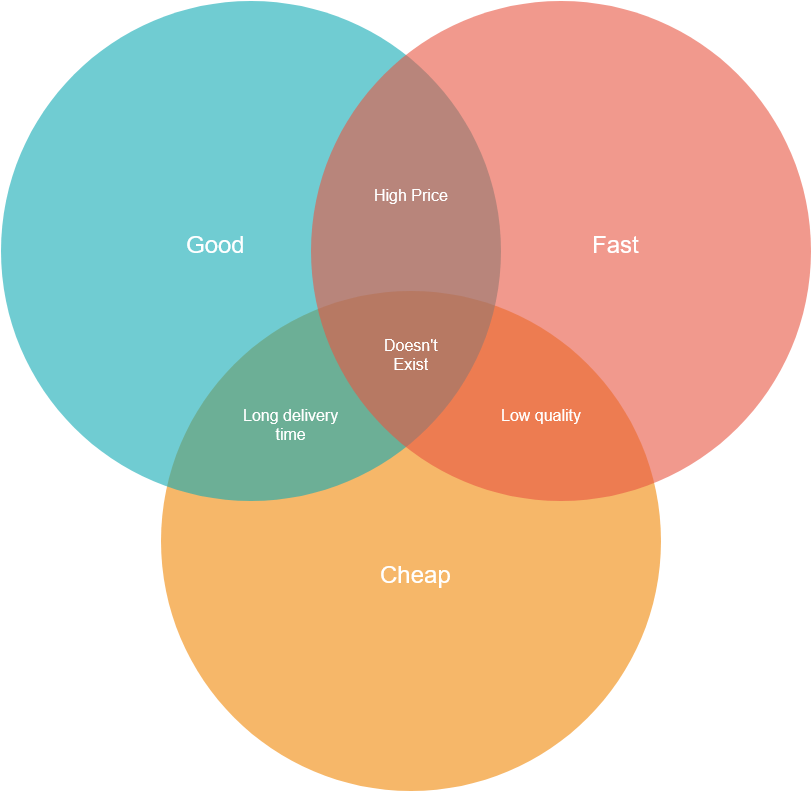Cheap – Fast – Good
Conventional internet wisdom tells us we should pick two. It’s often visualised in one of these Venn diagrams:

The thing with conventional internet wisdom is that it often finds its way to the office floor. We see this touted by software vendors and their buyers.
The implication is that since nobody wants junk and nobody wants a late delivery, option 3 is the valid one: be prepared to spend the big dollars if you’re building software.
Conventional internet wisdom isn’t always right. In fact there is a sweet spot between Cheap – Fast – Good that works like magic in software development.
The problem with the Venn diagram above is that it doesn’t take into account the scope. The sheer volume of work is the main reason software endeavours go south.
So let’s add size to the mix and see what happens:
Cheap – Fast – Good – Large
Pick three.

A lot is going on in the above Venn diagram, but the main take away is this: Large scope introduces low quality or high risk. Scope is an uncertainty multiplier.
High risk describes those monster projects that have a huge backlog, loads of team members and strict timing. In theory, they could work. In reality, they drag on. They break your spirit and your bank.
But look at that nice sweet spot: Cheap – Fast – Good = Small.
Small iterations let you take control of your software development costs, while still allowing you to deliver quality products fast.
It’s a no-brainer if you think about it.
Minimizing your scope maximizes your value. There is always a clever way to take smaller steps.
If you’re looking to take control of your software development and could use some help: let me know.